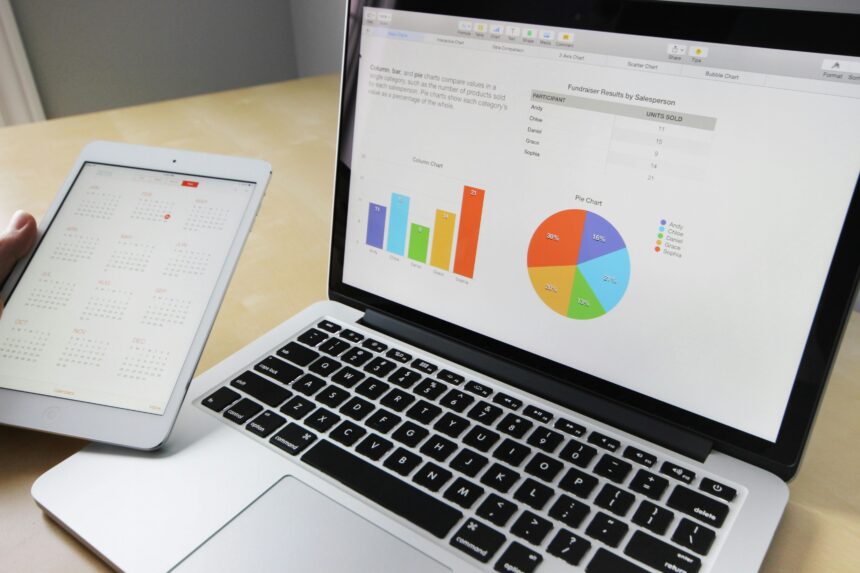In today’s data-driven world, the ability to integrate and manage data effectively is crucial for businesses of all sizes. One tool that has gained popularity among data professionals is SQL Server Integration Services, commonly known as SSIS. Specifically, the SSIS 816 version offers a host of features and functionalities that can streamline data integration processes, making it an indispensable asset for organizations. In this blog post, we will explore the various aspects of SSIS, its benefits, and how it can be leveraged to optimize your data operations.
What is SSIS 816?
SSIS 816 is a version of SQL Server Integration Services, a component of Microsoft’s SQL Server database software. It is designed to help data professionals perform data integration, transformation, and ETL (Extract, Transform, Load) tasks efficiently. SSIS offers a robust set of tools and features that simplify the process of moving and transforming data between different sources and destinations.
Key Features of SSIS 816
SSIS comes with a range of features that make it a powerful tool for data integration. Some of the key features include:
- Data Flow Tasks: SSIS 816 allows you to create complex data flow tasks that can extract data from various sources, transform it using built-in transformations, and load it into different destinations.
- Control Flow Tasks: You can create control flow tasks to manage the execution of data flow tasks and other processes, providing greater control over the integration process.
- Integration with Various Data Sources: SSIS-816 supports integration with a wide range of data sources, including SQL Server, Oracle, MySQL, and flat files.
- Advanced Error Handling: The tool offers advanced error handling capabilities, allowing you to capture and handle errors effectively during the integration process.
Benefits of Using SSIS 816
Using SSIS 816 for your data integration needs offers several benefits:
- Efficiency: SSIS streamlines the data integration process, reducing the time and effort required to move and transform data.
- Scalability: The tool is designed to handle large volumes of data, making it suitable for organizations of all sizes.
- Flexibility: With support for various data sources and destinations, SSIS-816 provides the flexibility to integrate data from different systems seamlessly.
- Cost-Effective: As a component of SQL Server, SSIS is a cost-effective solution for organizations already using Microsoft’s database software.
Getting Started with SSIS 816
If you’re new to SSIS-816, getting started can seem daunting. However, with the right approach and resources, you can quickly become proficient in using this powerful tool.
Installing SSIS 816
The first step in getting started with SSIS-816 is to install it on your system. SSIS is part of the SQL Server installation package, so you’ll need to install SQL Server if you haven’t already.
- Download SQL Server: Visit the Microsoft website and download the latest version of SQL Server that includes SSIS-816.
- Install SQL Server: Follow the installation instructions to install SQL Server on your system. During the installation process, make sure to select the SSIS component.
- Configure SSIS: Once the installation is complete, you’ll need to configure SSIS by setting up the necessary connections and configurations.
Creating Your First SSIS Package
An SSIS package is a collection of tasks and transformations that define the data integration process. Here’s how you can create your first SSIS package:
- Open SQL Server Data Tools (SSDT): SSDT is the development environment for creating SSIS packages. Open SSDT and create a new SSIS project.
- Create a New Package: In the Solution Explorer, right-click on the SSIS Packages folder and select “New SSIS Package.”
- Add Data Flow Task: Drag and drop a Data Flow Task from the toolbox into the Control Flow tab.
- Configure Data Flow Task: Double-click on the Data Flow Task to open the Data Flow tab. Add the necessary data sources, transformations, and destinations to define the data flow.
- Execute Package: Once you’ve configured the package, you can execute it to see the results.
Best Practices for Using SSIS 816
To make the most of SSIS 816, it’s important to follow best practices that ensure efficient and reliable data integration.
- Plan Your Integration Process: Before creating an SSIS package, plan the integration process thoroughly. Identify the data sources, transformations, and destinations, and outline the steps involved.
- Organize Packages: Keep your SSIS packages organized by grouping related tasks into separate packages. This makes it easier to manage and maintain the packages.
- Use Variables and Parameters: Utilize variables and parameters to make your SSIS packages more flexible and reusable. This allows you to change values dynamically without modifying the package.
- Implement Error Handling: Implement robust error handling mechanisms to capture and handle errors that may occur during the integration process. This ensures that your data integration process is reliable and resilient.
- Optimize Performance: Optimize the performance of your SSIS packages by using appropriate transformations and minimizing unnecessary data movement. Use techniques like parallel processing and data partitioning to improve performance.
Advanced Features of SSIS 816
SSIS 816 offers several advanced features that can enhance your data integration process.
Data Profiling
Data profiling is an essential step in the data integration process. It involves analyzing the data to identify patterns, inconsistencies, and anomalies. SSIS 816 includes a Data Profiling Task that allows you to profile your data and generate detailed reports.
Data Quality Services (DQS)
Data quality is crucial for accurate and reliable data integration. SSIS 816 integrates with Data Quality Services (DQS) to provide data cleansing and matching capabilities. You can use DQS to identify and correct data quality issues before integrating the data.
Master Data Services (MDS)
Master data management is another critical aspect of data integration. SSIS integrates with Master Data Services (MDS) to provide a centralized repository for managing master data. You can use MDS to ensure consistency and accuracy of master data across your organization.
Change Data Capture (CDC)
Change Data Capture (CDC) is a feature that allows you to track changes in your data sources. SSIS 816 includes CDC components that enable you to capture and process changes in real-time. This is particularly useful for scenarios where you need to synchronize data between different systems.
Common Use Cases for SSIS 816
SSIS 816 can be used in a variety of scenarios to solve complex data integration challenges.
Data Migration
One common use case for SSIS is data migration. Whether you’re migrating data from an old system to a new one or consolidating data from multiple sources, SSIS can help you achieve a smooth and efficient migration process.
Data Warehousing
SSIS 816 is also widely used for data warehousing. You can use SSIS to extract data from various sources, transform it into a suitable format, and load it into a data warehouse. This enables you to create a centralized repository for your data, facilitating better analysis and reporting.
ETL Processes
ETL (Extract, Transform, Load) is a core functionality of SSIS . You can use SSIS to extract data from different sources, apply various transformations to clean and enrich the data, and load it into the desired destination. This makes it easy to integrate data from multiple systems and create a unified view.
Integrating SSIS 816 with Other Tools
SSIS can be integrated with other tools and technologies to enhance its capabilities.
Integration with Azure Data Factory
Azure Data Factory (ADF) is a cloud-based data integration service that enables you to create data pipelines in the cloud. You can integrate SSIS 816 with ADF to leverage the power of the cloud for your data integration processes.
Integration with Power BI
Power BI is a popular business intelligence tool that allows you to create interactive reports and dashboards. You can use SSIS to extract and transform data, and then load it into Power BI for analysis and visualization.
Integration with Machine Learning
Machine learning is becoming increasingly important in data integration. You can integrate SSIS with machine learning platforms like Azure Machine Learning and SQL Server Machine Learning Services to build and deploy machine learning models.
FAQs about SSIS 816
What is the difference between SSIS 816 and previous versions?
SSIS 816 offers several enhancements and new features compared to previous versions. These include improved performance, better integration with other tools, and advanced data profiling and quality services.
Can SSIS 816 be used for real-time data integration?
Yes, SSIS supports real-time data integration through features like Change Data Capture (CDC) and integration with Azure Data Factory. This allows you to capture and process data changes in real-time.
Is SSIS 816 suitable for small businesses?
Yes, SSIS is suitable for businesses of all sizes. Its scalability and flexibility make it a good fit for small businesses as well as large enterprises.
Conclusion
SSIS-816 is a powerful tool that can significantly enhance your data integration processes. With its robust features, scalability, and flexibility, it is well-suited for a wide range of use cases, from data migration to real-time data integration. By leveraging SSIS, businesses can streamline their data operations, improve efficiency, and gain valuable insights from their data.
If you’re looking to explore the full potential of SSIS, consider downloading a free trial and experiencing its capabilities firsthand. Whether you’re a small business or a large enterprise, SSIS-816 offers the tools you need to take your data integration to the next level.




